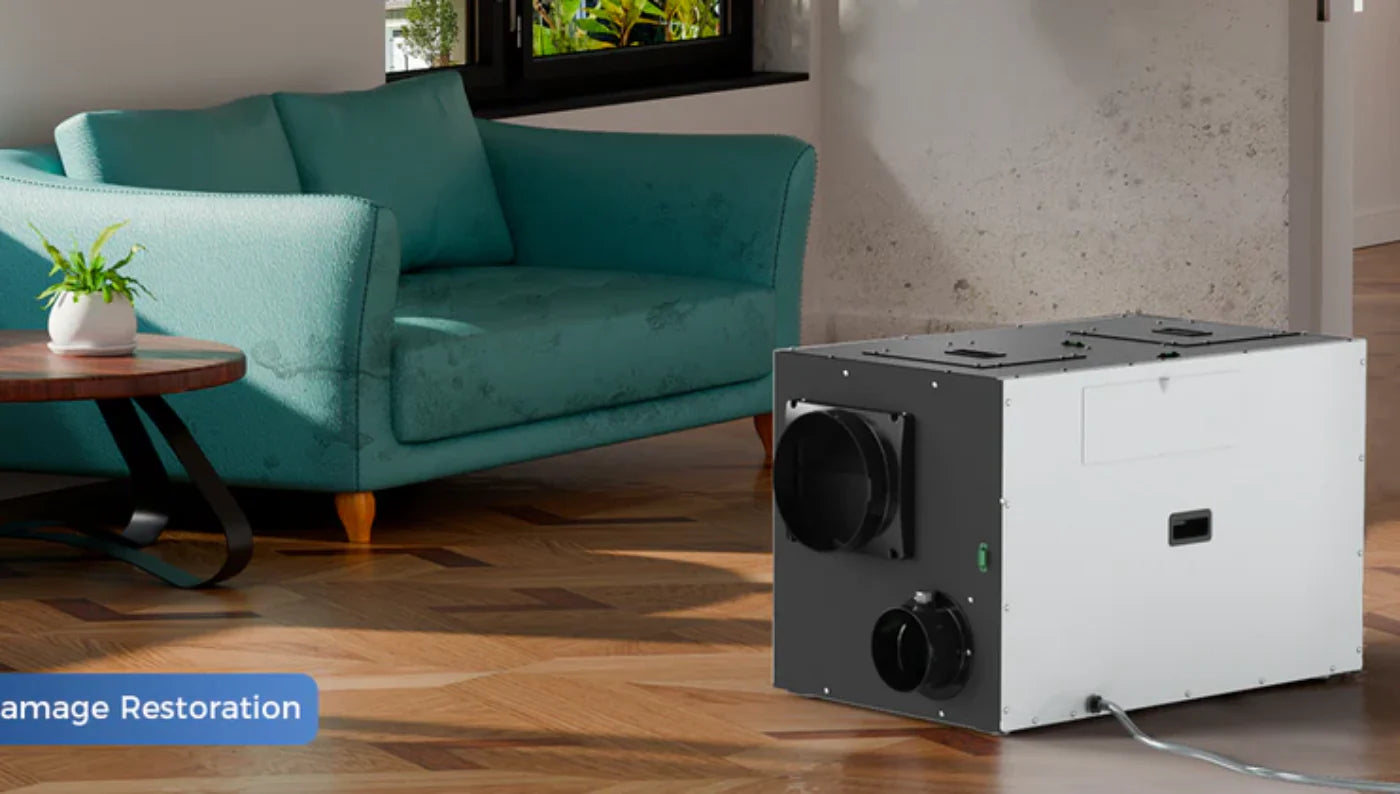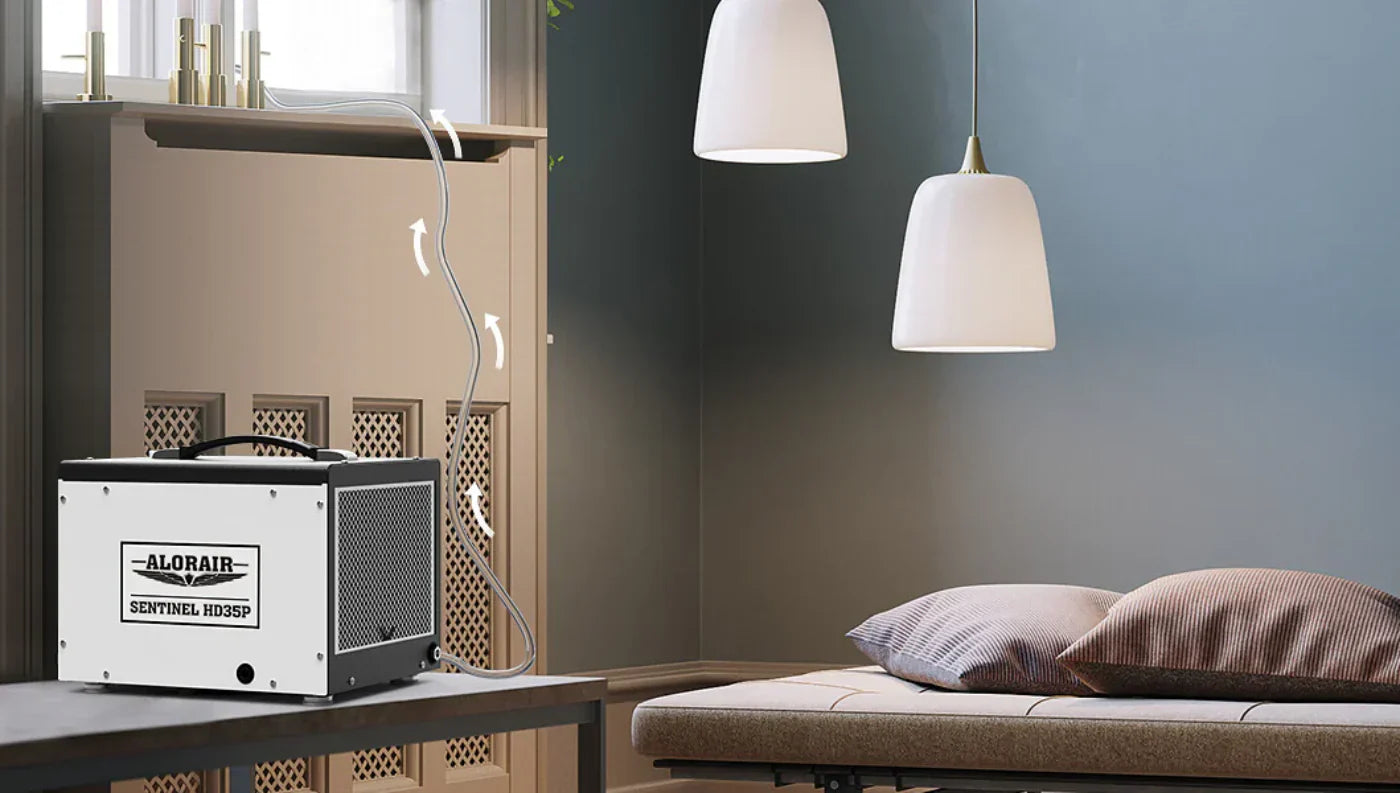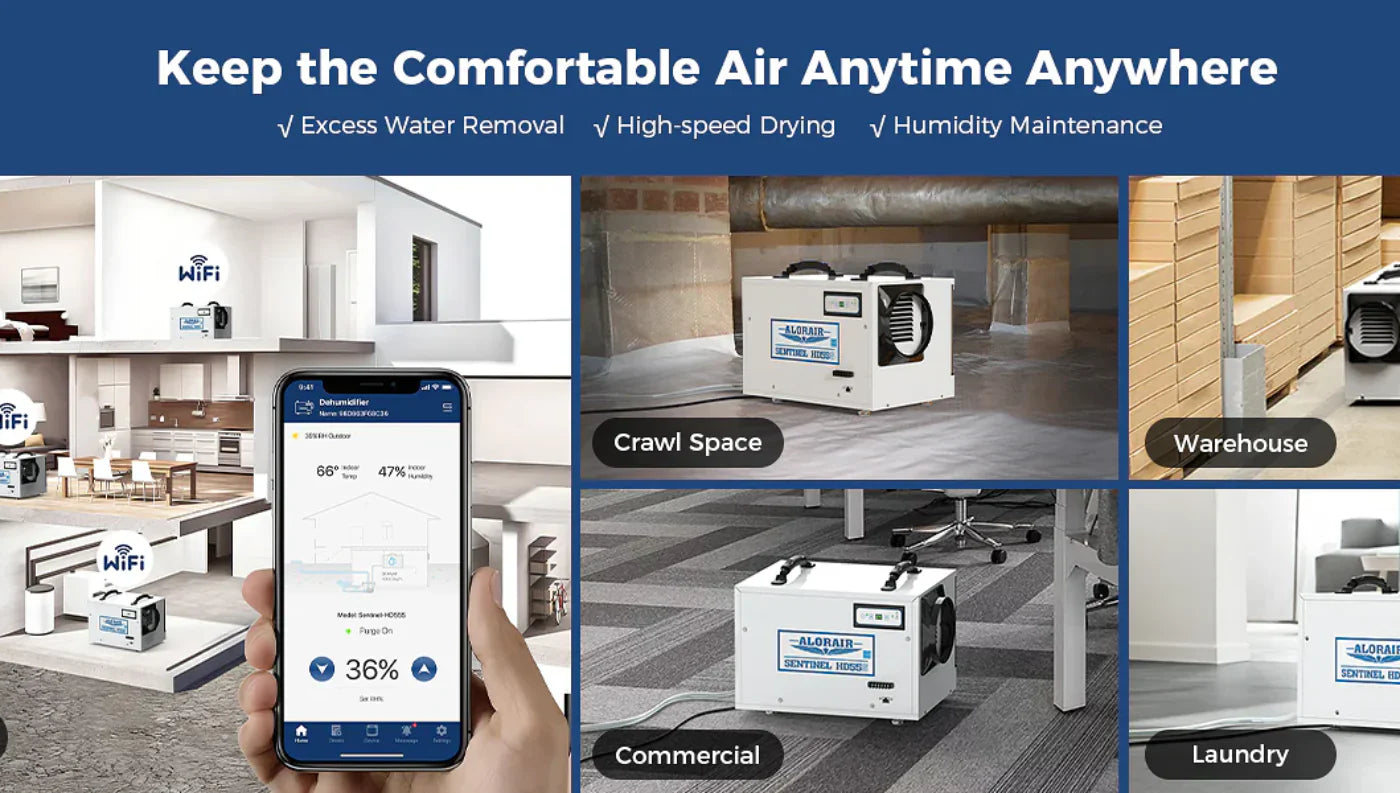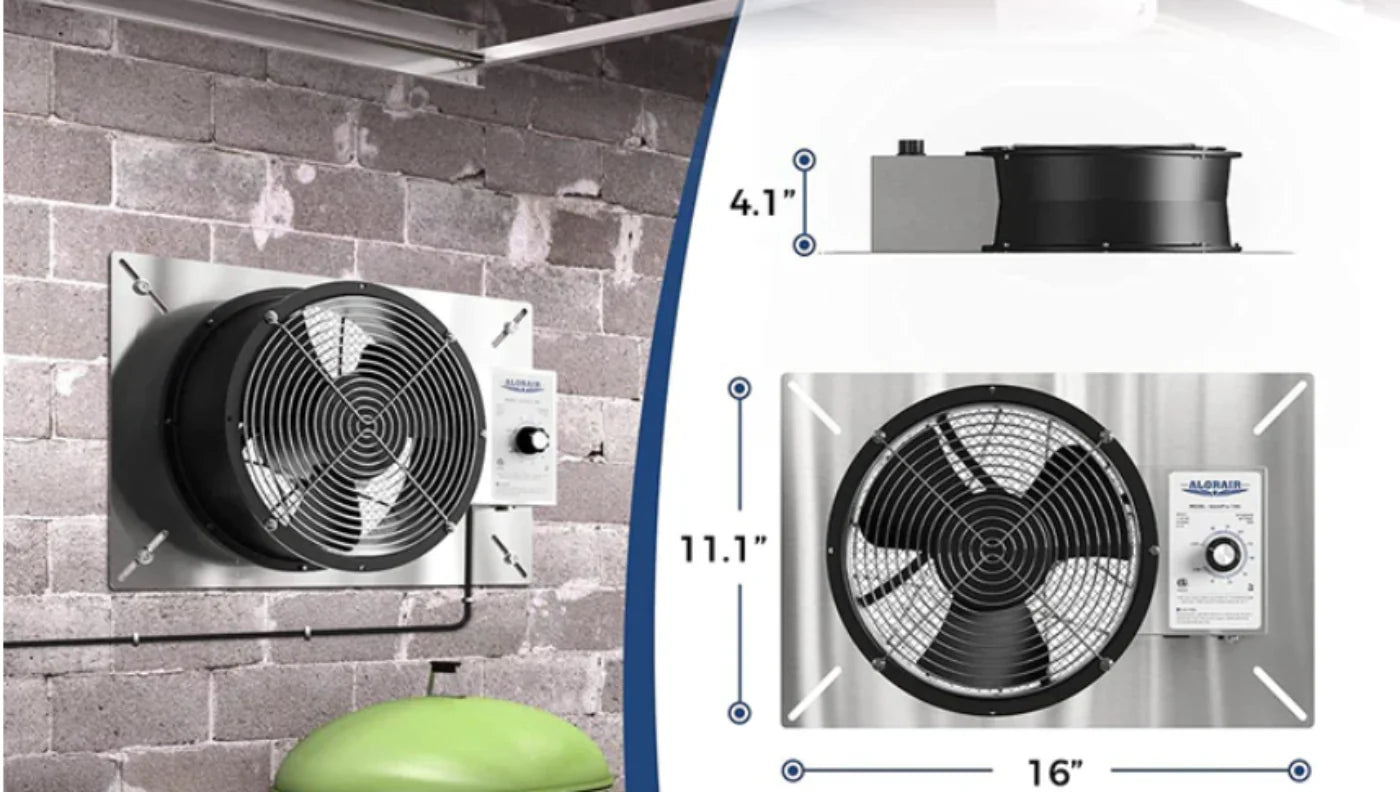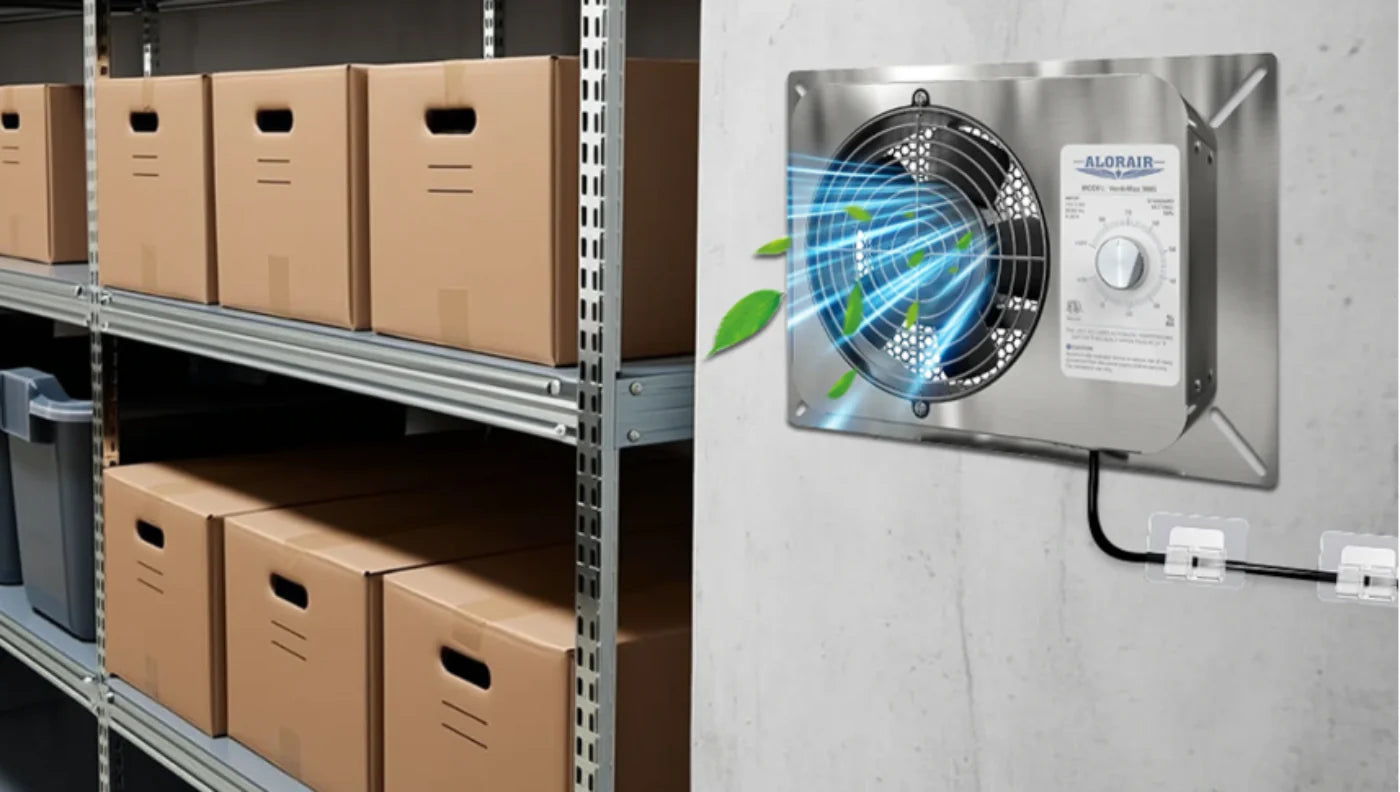Indeed, a dehumidifier is a potent ally in the quest to banish unpleasant odors from indoor spaces. Musty, damp smells often permeate environments with high humidity levels, signaling the presence of mold, mildew, or bacteria. By extracting excess moisture from the air, dehumidifiers effectively thwart the growth of these odor-causing microorganisms. As humidity levels decrease, so too does the prevalence of musty odors, leaving behind a fresher, more inviting atmosphere. Whether it's in a basement, bathroom, or other damp-prone areas, a dehumidifier acts as a silent sentinel, purging the air of musty smells and restoring a sense of cleanliness and comfort to indoor spaces. This article delves into how dehumidifiers can help mitigate various smells, particularly those caused by excess moisture.
How Dehumidifiers Combat Odors
Reducing Humidity Levels
Dehumidifiers play a critical role in maintaining optimal humidity levels within indoor environments. By drawing in humid air, they extract excess moisture, effectively lowering humidity levels to a range of 30-50%. This reduction in humidity creates an inhospitable environment for mold, mildew, and dust mites, as these allergens thrive in damp conditions. By eliminating the moisture that sustains these organisms, dehumidifiers help to curb their growth, ultimately reducing the odors associated with them.
Preventing Mold and Mildew Growth
Mold and mildew not only pose health risks but also emit pungent, musty odors that can permeate indoor spaces. Dehumidifiers act as a frontline defense against mold and mildew growth by regulating humidity levels. By keeping humidity in check, particularly in moisture-prone areas like basements, bathrooms, and kitchens, dehumidifiers inhibit the conditions conducive to fungal proliferation. This proactive prevention is paramount for preserving structural integrity and ensuring a fresh, odor-free indoor environment.
Improving Air Quality
Lower humidity levels contribute to improved overall air quality by reducing the prevalence of musty smells and enhancing the freshness of indoor spaces. Dry air is less hospitable to odor-causing microorganisms, resulting in a cleaner, more breathable atmosphere. This improvement in air quality is especially beneficial for individuals with allergies or respiratory issues, as it minimizes exposure to airborne allergens and irritants, ultimately promoting better respiratory health and well-being.
Reducing Dust Mites
Dust mites, microscopic organisms that thrive in humid environments, are a common source of household odors and allergens. Dehumidifiers play a crucial role in controlling dust mite populations by lowering humidity levels. By creating a drier environment, dehumidifiers inhibit the proliferation of dust mites, thereby reducing related smells and alleviating allergy symptoms. This targeted approach to dust mite control contributes to a more comfortable and healthier indoor environment for occupants.
Combating Dampness
Persistent dampness in areas such as basements or poorly ventilated rooms can lead to a lingering, unpleasant smell that permeates indoor spaces. Dehumidifiers effectively combat dampness by extracting excess moisture from the air, thereby eliminating the root cause of these odors. By drying out damp spaces and maintaining optimal humidity levels, dehumidifiers help to create a more pleasant and inviting indoor environment, free from the musty smells associated with dampness.
By addressing these key aspects, dehumidifiers emerge as indispensable tools in the battle against indoor odors, offering comprehensive solutions for maintaining a fresh, healthy, and odor-free indoor environment.
Practical Tips for Using a Dehumidifier to Reduce Odors
Choose the Right Size
Ensuring your dehumidifier is appropriately sized for the room is crucial for optimal performance. A unit that’s too small may struggle to effectively reduce humidity levels, leading to lingering odors. Conversely, an oversized unit can extract moisture too quickly, potentially causing excessive dryness. Refer to the manufacturer's guidelines or consult with a professional to select the right size dehumidifier for your space.
Placement
Strategic placement of the dehumidifier is key to targeting areas with high humidity and noticeable odors. Basements, bathrooms, and laundry rooms are common problem areas where moisture tends to accumulate. Position the dehumidifier in central locations within these spaces, away from obstructions, to maximize air circulation and ensure thorough moisture extraction.
Regular Maintenance
Regular cleaning and maintenance of the dehumidifier are essential for preventing mold and bacteria buildup, which can exacerbate odors. Clean the water tank, air filters, and coils according to the manufacturer's instructions. Failure to maintain the unit can compromise its efficiency and contribute to the circulation of stale, musty air.
Monitor Humidity Levels
Utilize a hygrometer to monitor indoor humidity levels and adjust the settings of the dehumidifier accordingly. Ideally, aim to maintain humidity levels between 30-50% to inhibit the growth of odor-causing microorganisms. Continuously monitoring humidity levels allows for proactive adjustments, ensuring optimal moisture control and odor elimination.
Ventilation
Enhancing ventilation complements the dehumidifier's efforts by promoting airflow and expelling stale air from the indoor environment. Open windows, especially during dry and sunny weather, to facilitate natural ventilation and reduce humidity levels. Additionally, exhaust fans in bathrooms and kitchens should be utilized to expel moisture-laden air outdoors. Proper ventilation helps to further minimize odors and maintain a fresh, breathable atmosphere indoors.
By implementing these practical tips, you can harness the full potential of your dehumidifier to effectively reduce odors and create a more comfortable and pleasant indoor environment.
Limitations of Dehumidifiers
While dehumidifiers are effective in reducing moisture-related odors, they may not be as effective against all types of smells. For instance, odors from cooking, pets, or smoke may require additional solutions such as:
Air Purifiers: To capture and neutralize airborne particles and odors not related to humidity.
Ventilation: Increasing ventilation to allow fresh air to circulate and remove lingering smells.
Thorough Cleaning: Regular cleaning of surfaces, fabrics, and carpets to eliminate odor sources.
dehumidifier gets rid of the musty smell in the basement
Yes, a dehumidifier can significantly help eliminate the musty smell in a basement. Musty odors are typically caused by high humidity levels, which create an ideal environment for mold, mildew, and bacteria to thrive. By reducing the moisture in the air, a dehumidifier inhibits the growth of these odor-causing organisms. For optimal results, it’s important to choose a dehumidifier that is appropriately sized for your basement and to place it in a central location with good airflow. Additionally, maintaining the dehumidifier by regularly cleaning it and monitoring humidity levels can enhance its effectiveness. Combined with proper ventilation and addressing any sources of moisture, a dehumidifier can effectively freshen up a musty basement
crawl space dehumidifier
A crawl space dehumidifier is a specialized appliance designed to control moisture levels in the often overlooked area beneath homes. Crawl spaces are prone to moisture buildup due to factors such as groundwater seepage, poor ventilation, and high humidity levels. This excess moisture can lead to a host of problems, including structural damage, mold growth, and pest infestations. A crawl space dehumidifier helps address these issues by extracting moisture from the air, maintaining optimal humidity levels, and promoting a healthier, more comfortable living environment. These dehumidifiers come in various sizes and configurations to suit different crawl space dimensions and moisture levels. They typically feature built-in condensate pumps, automatic humidity sensors, and energy-efficient operation for optimal performance and ease of maintenance. Investing in a crawl space dehumidifier is essential for protecting the structural integrity of the home, preserving indoor air quality, and preventing costly damage caused by moisture-related issues.
What is Crawl Space?
A crawl space is a shallow, unfinished area beneath a building, typically found between the ground and the first floor. It is usually accessed through a small opening or doorway and is not tall enough for a person to stand upright. Crawl spaces are commonly found in homes built on raised foundations, such as pier-and-beam or crawl space foundations, as well as in areas with high water tables or rocky terrain where traditional basements are impractical.
Crawl spaces serve several purposes, including providing access to utilities such as plumbing, electrical wiring, and HVAC systems. They also allow for ventilation and airflow beneath the building, which can help prevent moisture buildup and reduce the risk of mold, mildew, and wood rot.
Despite their functional importance, crawl spaces are often neglected and can become prone to issues such as moisture intrusion, pest infestations, and poor air quality. Proper maintenance and insulation are essential for ensuring the health and integrity of a crawl space and the overall building structure.
Unveiling the Versatile Purpose of Dehumidifiers
The purpose of a dehumidifier transcends the mere extraction of moisture from the air; it's a guardian of health, property, and comfort. By controlling humidity levels, dehumidifiers create safer, healthier indoor environments, preserve property and infrastructure, enhance energy efficiency, and contribute to environmental sustainability. In essence, dehumidifiers are indispensable allies in the ongoing battle against the perils of excessive moisture.
1. Moisture Control and Health Preservation
Excessive moisture in the air fosters an environment ripe for the growth of mold, mildew, and dust mites. These allergens can trigger respiratory issues, exacerbate allergies, and even lead to serious health problems. By extracting moisture from the air, dehumidifiers create an inhospitable environment for these microorganisms, thereby safeguarding respiratory health and overall well-being.
2. Preservation of Property and Infrastructure
Moisture isn't just harmful to health; it's also detrimental to property. High humidity levels can warp wooden furniture, corrode metal fixtures, and damage electronic devices. Additionally, persistent moisture can compromise the structural integrity of buildings, leading to costly repairs. Dehumidifiers act as guardians, protecting property and infrastructure from the ravages of moisture-induced damage.
3. Odor Mitigation and Enhanced Comfort
Musty odors are an unwelcome consequence of damp environments. Not only are they unpleasant, but they also indicate the presence of mold or mildew. Dehumidifiers eliminate excess moisture, thereby eradicating the conditions that foster odor-causing organisms. Consequently, indoor spaces become fresher, more inviting, and infinitely more comfortable.
4. Energy Efficiency and Cost Savings
Excessive humidity forces air conditioning systems to work harder to maintain comfortable temperatures. By reducing humidity levels, dehumidifiers alleviate this burden, leading to more efficient cooling and lower energy bills. Additionally, by preventing moisture-related damage to property and infrastructure, dehumidifiers help homeowners avoid costly repairs and replacements, resulting in long-term cost savings.
5. Climate Control and Environmental Impact
Beyond individual homes, dehumidifiers play a role in climate control and environmental sustainability. In regions with high humidity, dehumidifiers can mitigate moisture-related issues in commercial spaces, industrial settings, and agricultural facilities. By preserving the integrity of structures, reducing energy consumption, and curbing mold proliferation, dehumidifiers contribute to a more sustainable built environment.
Dihumiditifier Prons and Cons:
Pros:
Controls Humidity:
Dehumidifiers maintain a consistent humidity level in indoor spaces, ensuring a comfortable atmosphere for occupants. By reducing moisture in the air, they prevent condensation on windows and walls, minimizing the risk of mold and mildew growth. This regulation of humidity levels also helps preserve the integrity of wooden furniture and flooring, preventing warping or damage due to excess moisture.
Prevents Mold and Mildew Growth:
Inhibiting the proliferation of mold and mildew, dehumidifiers safeguard indoor environments against potential health hazards and structural damage. By extracting moisture from the air, they create an inhospitable environment for these harmful fungi to thrive. This proactive measure not only protects property but also promotes a healthier living space for occupants, especially those with respiratory sensitivities.
Improves Indoor Air Quality:
Dehumidifiers play a crucial role in enhancing indoor air quality by reducing the presence of airborne allergens and contaminants. By minimizing humidity levels, they discourage the growth of dust mites, mold spores, and bacteria, which can trigger allergies and respiratory issues. This purification of indoor air contributes to a cleaner, healthier environment for occupants to enjoy.
Protects Property:
By preventing moisture-related damage, such as rotting wood and corrosion of metal surfaces, dehumidifiers help preserve the structural integrity of buildings and furnishings. This protection extends the lifespan of property investments, saving homeowners from costly repairs and replacements in the long run. Additionally, maintaining optimal humidity levels can prevent damage to electronics and sensitive equipment.
Reduces Musty Odors:
Eliminating the conditions conducive to mold and mildew growth, dehumidifiers effectively neutralize musty odors in indoor spaces. This elimination of unpleasant smells creates a more inviting environment for occupants and visitors alike. By keeping the air fresh and odor-free, dehumidifiers contribute to a positive living experience and enhance overall comfort levels.
Enhances Comfort:
Maintaining optimal humidity levels with a dehumidifier promotes a more comfortable indoor environment by reducing feelings of stickiness and clamminess. This enhancement of comfort extends to bedding and clothing, which feel fresher and more comfortable in a drier atmosphere. Additionally, controlling humidity levels can help regulate room temperatures, leading to a more pleasant living space year-round.
Energy Efficiency:
Dehumidifiers contribute to energy efficiency by reducing the workload on air conditioning systems. Dry air feels cooler than humid air, allowing occupants to set thermostats higher without sacrificing comfort. This energy-saving benefit translates to lower utility bills and reduced environmental impact, making dehumidifiers a sustainable choice for indoor climate control.
Preserves Furniture and Textiles:
By maintaining a drier environment, dehumidifiers protect furniture, clothing, and other textiles from moisture-related damage. This preservation extends the lifespan of furnishings and prevents the growth of mold and mildew, which can ruin fabrics and upholstery. Additionally, dehumidifiers help preserve valuable items such as artwork, musical instruments, and collectibles.
Reduces Allergies and Respiratory Issues:
Minimizing the presence of airborne allergens and irritants, such as dust mites and mold spores, dehumidifiers alleviate allergy symptoms and respiratory issues for occupants. This reduction in allergen exposure creates a healthier indoor environment, particularly for individuals with asthma or allergies. By promoting cleaner, fresher air, dehumidifiers contribute to improved respiratory health and overall well-being.
Versatility:
Dehumidifiers come in various sizes and types to suit different indoor environments and needs. Portable units are available for single rooms or smaller spaces, while larger units offer whole-house dehumidification. This versatility makes dehumidifiers suitable for a wide range of applications, from residential homes to commercial buildings and industrial facilities. Whether addressing specific moisture issues or maintaining optimal indoor air quality, dehumidifiers provide versatile solutions for creating a healthier, more comfortable living and working environment.
Dehumidifier Cons:
Energy Consumption:
Dehumidifiers can be energy-intensive appliances, especially if they run continuously or in large spaces. This can lead to increased energy costs, particularly in regions with high humidity levels or during periods of heavy rainfall.
Initial Cost and Maintenance:
Dehumidifiers can be expensive to purchase initially, and they require regular maintenance to ensure optimal performance. This includes cleaning or replacing filters, emptying water tanks, and occasionally servicing the unit.
Noise: Some dehumidifiers can generate noise while in operation, which may be bothersome, especially if placed in living areas or bedrooms. However, many modern models are designed to operate quietly, so noise may not be a significant issue for all users.
Limited Coverage Area: Dehumidifiers are designed to treat specific areas or rooms, so they may not be effective in larger spaces or entire homes without multiple units. Additionally, they may struggle to maintain optimal humidity levels in areas with poor ventilation or significant moisture sources.
Potential Over-Drying: In some cases, dehumidifiers may remove too much moisture from the air, leading to overly dry indoor conditions. This can cause discomfort, skin irritation, and respiratory issues, particularly in sensitive individuals.
Overall, while dehumidifiers offer numerous benefits in controlling humidity levels and improving indoor air quality, it's essential to weigh these against the potential drawbacks and consider factors such as energy consumption, noise levels, and maintenance requirements before purchasing and using a dehumidifier.




